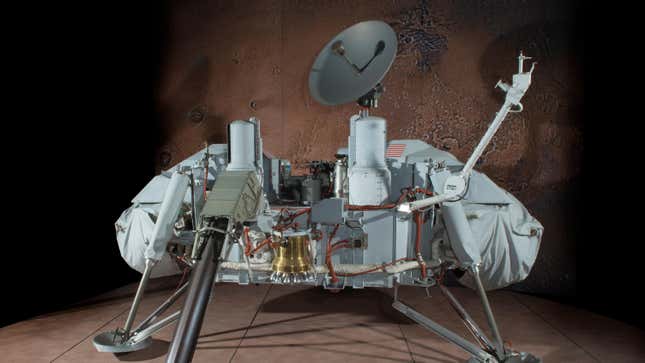NASA May Have Already Killed Life On Mars
We may earn a commission from links on this page
.
Photo: Heritage Age/Heritage Images (Getty Images)
When Vikings landed on Lindisfarne’s shores in 793, slaughtering the local English populace and pillaging the monastery of valuable relics beyond their cultural comprehension, they ushered in a new age of raiding and trading across Europe. More than 1000 years later, NASA’s Viking 1 lander might have done almost the same when it touched down on the Martian surface in 1976, based on new commentary published in the scientific journal Nature.

It's Time To Discontinue The Model S | Jalopinions
Dirk Schulze-Makuch, an astrobiologist at the Technische Universität Berlin, claims that NASA was wrong to assume that life on Mars would have the same prerequisites as life on Earth. He also posits that Viking 1’s experiments using soil samples may have killed microbial life in the soil by introducing too much water. Schulze-Makuch answered Space.com directly if the Viking program killed Martian life, saying:
I did a lot of work in the Atacama Desert, which is an analog environment to Mars. And we got some “Blues Clues” about how organisms survive there. From there, it wasn’t that difficult to put it together.
I presented this idea about a year ago at a special meeting on life in the universe, hosted by the King of the Netherlands. Many European Space Agency scientists were there, and I thought afterwards I may get some backlash, but they took it surprisingly well.
The science concept in this case is that salts, and organisms with the help of the salts, can pull water directly from the atmosphere. There’s also an effect where, as water is removed, there’s a sort of delay — a hysteresis — because the system resists crystallization. This means water can remain in a salt longer than expected, which is crucial because it raises the water activity on a microscopic level, making it accessible to microbes. Life is very good at taking advantage of these physical or chemical effects. There are plenty of examples in biology, which is very good at using these kinds of effects — I’d nearly call them tricks because they’re using this kind of quirky physics or chemistry.
Of course, I can’t say there’s definitely an organism on Mars exploiting these effects. But Mars, almost 4 billion years ago, was so much like Earth, with abundant water. As it became drier, moving toward its current desert state, these are the kinds of adaptations I’d expect any remaining life to develop.
No, these microbes aren’t the aliens from “Signs.” They wouldn’t be allergic to water, just sensitive to the liquid. It seems intuitive to reason that life on a different planet would develop in a way to suit that environment and not Earth.
The Viking 1 mission ended in November 1982 after a faulty command triggered a loss of contact. In the time since NASA hasn’t ended its search for life on the Red Planet. Studies by the space agency propose that there could be microbes beneath frozen water on the Martian surface.









































